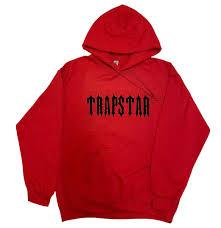Prevention strategies for businesses and individuals
High-quality counterfeit bills — sometimes called “supernotes” or “realistic counterfeits” — are designed to fool casual checks and even experienced cash handlers. While modern U.S. currency includes many anti-counterfeiting features, no system is perfect. Knowing what to look for, how to react calmly, and whom to notify will protect your money, employees, and customers.
Why this matters
If you accept counterfeit currency, you absorb the loss — banks and law enforcement generally will not reimburse businesses for fake notes they accepted. Repeated incidents can signal organized criminal activity targeting your location. Quick detection and correct reporting help stop fraud and may assist law enforcement in dismantling larger operations.
What “realistic” counterfeits usually try to mimic — and why they still fail
Counterfeiters often focus on visual elements that can be reproduced cheaply (color, size, some surface features). More advanced forgers attempt to replicate watermarks, security threads, holograms, and color-shifting inks. However, modern banknotes combine tactile, visual, and machine-readable features; good fakes rarely replicate every layer accurately. That’s why routine checks using multiple senses and simple tools remain effective.
Safe, legal detection checks (do not attempt to recreate banknote features)
Use the three quick checks everyone can remember: Feel — Look — Tilt.
-
Feel the paper and texture. Genuine U.S. currency is printed on a cotton-linen blend and has a distinct crisp, fibrous feel. Intaglio printing produces slightly raised ink you can feel on portraits and numerals. If a bill feels like ordinary printer paper or is unusually limp, inspect further.
-
Look for embedded features. Hold the bill to light to check for a watermark portrait and an embedded security thread labeled with the denomination. These elements are part of the paper, not surface prints.
-
Tilt to observe dynamic elements. Color-shifting inks, 3D security ribbons (on newer $100 bills), and foil features change appearance when tilted. If these elements look flat or are obvious stickers or surface prints, the bill is likely fake.
Supplement these checks with inexpensive tools:
-
A small UV lamp reveals security-thread fluorescence.
-
A magnifier helps inspect microprinting and fine line detail.
-
Currency-checking devices or banknote counters with detection features can speed checks in high-volume environments.
Avoid relying on a single test (for example, the marker pen alone). Use at least two different checks before making a judgment.
A calm, lawful response if you suspect a counterfeit bill
If a bill seems suspicious, protect yourself and preserve evidence:
-
Do not return the bill to the customer. Politely explain you need to verify the note and offer an alternative payment method (card, mobile pay, or different cash).
-
Minimize handling. Place the suspected bill in an envelope or folder to preserve any forensic evidence such as fingerprints.
-
Document the incident. Record date, time, transaction amount, and any observable customer details. Preserve CCTV footage and note which register and employee were involved.
-
Contact authorities and your bank. The U.S. Secret Service leads federal counterfeiting investigations; also notify local police and your bank for guidance on how to hand over the bill. Do not alter the bill or attempt to clean it.
-
Avoid confrontation or pursuit. Do not accuse or attempt to detain someone — safety first. Let law enforcement handle investigations.
Legal context (brief)
Passing counterfeit currency is a federal crime under U.S. law. Individuals who knowingly produce, distribute, or pass counterfeit banknotes face serious criminal penalties. Businesses that receive counterfeit notes are victims; cooperating with law enforcement and banks is the correct legal course.
Prevention strategies for businesses and individuals
-
Train staff. Short, regular training sessions (5–10 minutes) that practice the “Feel — Look — Tilt” routine and role-play how to handle Authentic Counterfeit Pounds Notes for sale London make checks routine and reduce stress during encounters.
-
Use visible policies and signage. A friendly sign that cash is checked for authenticity normalizes the process and reduces awkwardness.
-
Invest in basic tools. Keep a UV lamp and magnifier at each register; consider a currency counter with detection if you handle large volumes of cash.
-
Improve physical security. Good lighting and comprehensive CCTV coverage deter criminals and provide critical evidence.
-
Share information locally. If multiple businesses experience similar incidents, coordinate with local business associations and police. Patterns of time, location, or denomination can be invaluable for investigators.
When to escalate and who to contact
-
Immediate danger or ongoing crime: Call 911.
-
Suspected counterfeit (non-emergency): Contact local police and your bank. You can also notify the nearest U.S. Secret Service field office for guidance on handing over suspected notes.
-
For frequent incidents or large losses: Document everything and request a formal investigation — your local police can coordinate with federal authorities.
Final thoughts
Realistic counterfeit bills are a threat — but routine, multi-sensory checks, modest investment in detection tools, staff training, and calm reporting procedures dramatically reduce risk. Treat suspected counterfeits as evidence, not a confrontation. Your priority is safety: preserve the note, collect facts, and let law enforcement handle the rest.




